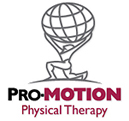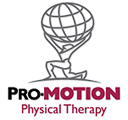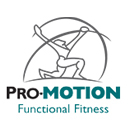FROM THE PROMOPT BLOG

What’s in a headache?
A headache can be a difficult thing to put a finger on. What causes it? Is it a lack of caffeine? Is it stress? Is it posture? What about diet? Headaches never seem consistent enough to create a causal chain from source to effect. Even chronic headaches can be difficult to diagnose. Some headaches are relatively minor. Others — migraines — can knock you out for days.
But the body is more complex than one cause and one effect. As we’ve discussed before in our dialogue around the idea of “be connected,” the body is a complex system. This means pain from one area of the body quite often comes from a myriad of results around the entire body.
One type of headache exemplifies this idea: the cervicogenic headache.
What is a cervicogenic headache?
In basic terms, it is a headache that is caused by something malfunctioning below it. It can be caused by the mixing of nerve signals between the cervical (neck) nerves and the cranial (brain) nerves. It can be a head pain referred from the bony structures, soft tissues, or muscular components of the upper neck. It commences with short, spaced-out episodes of pain but eventually moves to continuous pain.
Cervicogenic headaches are not extremely common but they can be an explanation for those suffering from chronic headaches. However, they are difficult to diagnose because they closely resemble tension-type headaches and migraines.
How do they occur?
The head pain can be triggered or reproduced by active neck movement, passive neck positioning especially in extension or extension with rotation toward the side of pain, or on applying digital pressure to the involved cervical joints (facets). The joint between the base of the skull and the first cervical vertebrae (the atlas) is innervated by the greater occipital nerve. Irritation of this nerve can refer pain to the back of the head.
Usually, the cause of such headaches comes from high levels of stress to the neck and spine. This can come from many places but the most frequent results reside in fatigue, sleeping poorly, back problems, existing injuries, basic posture, and high levels of muscle stress.
This type of headache manifests itself in many ways. It can be a consistent pain in the back of your head, even extended down into your neck and arms. It can occur behind your eyebrows in the front of your head. These headaches can intensify after sudden movements such as a sneeze or a jerk of the head. In its worst cases, you might even feel nauseous, with blurred vision and sensitivity to light.
Make Them Go Away
Sometimes, basic pain relievers such as aspirin or acetaminophen can work as a treatment. If the headaches are constant or degrading to your quality of life, prescriptions are available from doctors that provide a sustained-release medication for constant treatment.
But, truthfully, the best treatment is prevention. Because the cause of this pain comes from the neck, good posture and reduced tension will help.
Physical therapy is an excellent tool on the preventative side, as studies suggest. The findings point toward ongoing exercise and physical conditioning as a clear long-term prevention tool. Exercise can reduce stress as well as build better mobility and stability of the neck and shoulder complex.
In particular, mobilization techniques such as muscle energy techniques, strain-counter strain, and joint articulation techniques are well suited for headache management.
Slowly but surely, the inclusion of strengthening and aerobic conditioning will help get you to a position where headaches are more manageable.
Headaches Are Never Fun
But your ability to diagnose headaches, while difficult, will lead you to a place where you can manage the pain and have fewer occurrences. Do you have chronic headaches and think they might be cervicogenic headaches? At Pro-Motion Physical Therapy, we will evaluate the particular signs and symptoms related to your complaints and work alongside you to treat the causes, compensations, and symptoms of headache.







